Things to avoid and things to look out for when buying baggies. And answers to why MTBers wear baggies in the first place.
Why do mountain bikers wear baggy shorts?
There are some occasional slight functional benefits to baggy shorts but mostly it’s to do with just not-wanting-to-wear-lycra.
It’s understandable really. Road cyclists may have become used to parading around in figure-hugging spandex but mountain bikers like to look a bit more, well… normal.
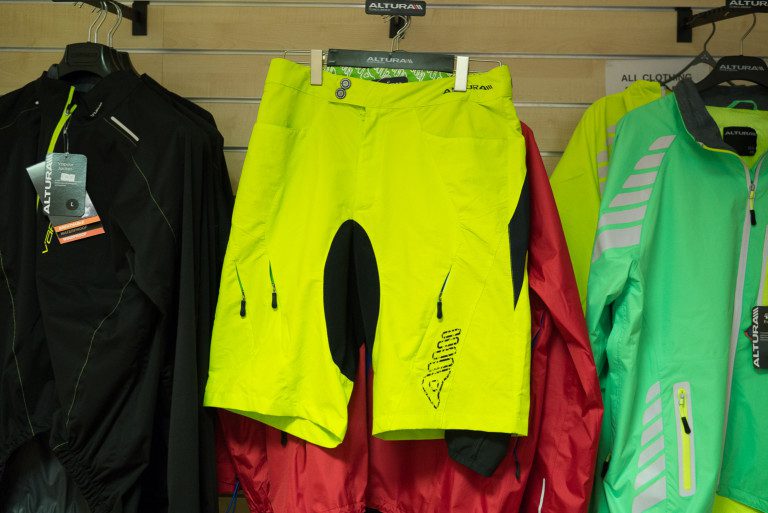
The hidden secret
The hidden secret is that underneath baggy shorts there will inevitably be some form of lycra short. Cycling without a pair of shorts on underneath – or a set of padded liners – results in mucho chafing and discomfort. MTBers may be vain but they’re not stupid.
When baggy MTB shorts first came out they all came with internal liner shorts. They often didn’t fit very well and didn’t have very good pads in them.
These days it’s more common for baggy shorts not to come with any liner short. The idea being that people use/get an additional pair of liner shorts of their preference to go under them.
Remember to check the product description to see if the shorts come with liners or not. In our experience it’s better to budget for getting a pair of baggy shorts and a separate pair of padded lycra shorts. This is because the liner shorts that come supplied with baggy shorts aren’t usually very good quality and you’ll only end up having to buy some other liner shorts sooner or later.
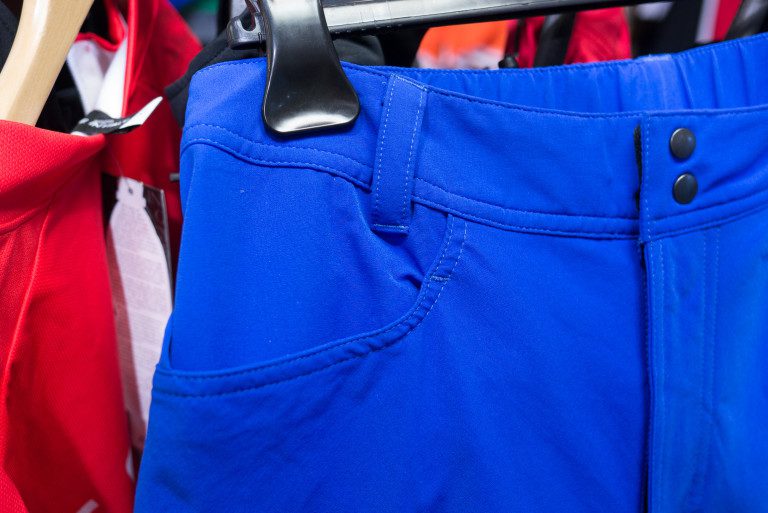
What are the benefits of baggies?
Pockets. Having somewhere to stash something is very handy during the frequent rests and stops during a ride.
Crash protection. Crashing in just a pair of lycra shorts leads to rips and cuts – of both fabric and flesh. Having an extra layer of material between the inner short and the earth prevents a lot of cuts and grazes. The outer baggy layer can slide/move around against the inner layer – this dissipates a lot of the crash energy.
Weather protection. Even regular baggy shorts come in handy at keeping the wind chills and light trail spray at bay. You can also get waterproof baggy shorts which act like jackets for your legs (if you know what I mean).
How are they different to normal baggy shorts?
MTB baggies are cut differently to casual shorts.
They have raised rear waistbands to prevent ‘builders bum’ when on the bike.
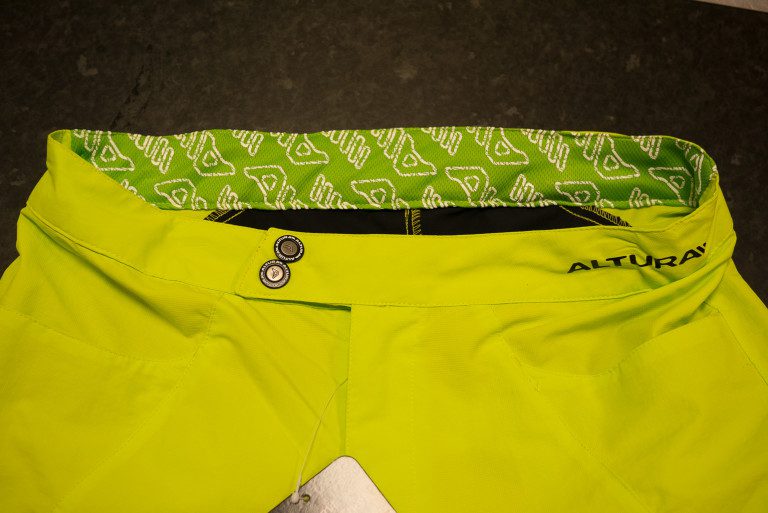
They’re often cut lower at the front of the knee than the back of the knee, so as to avoid pedalling chafing and interference with knee pads. Some shorts even have special low-friction front hems to avoid shorts snagging on the top of knee pads.
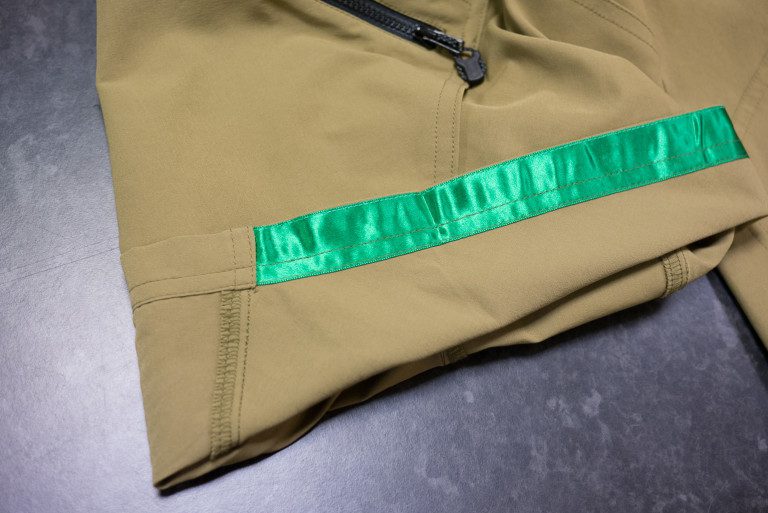
MTB shorts often don’t have a seam in the middle of the seat/crotch area. This is to avoid discomfort and chafing in the saddle.
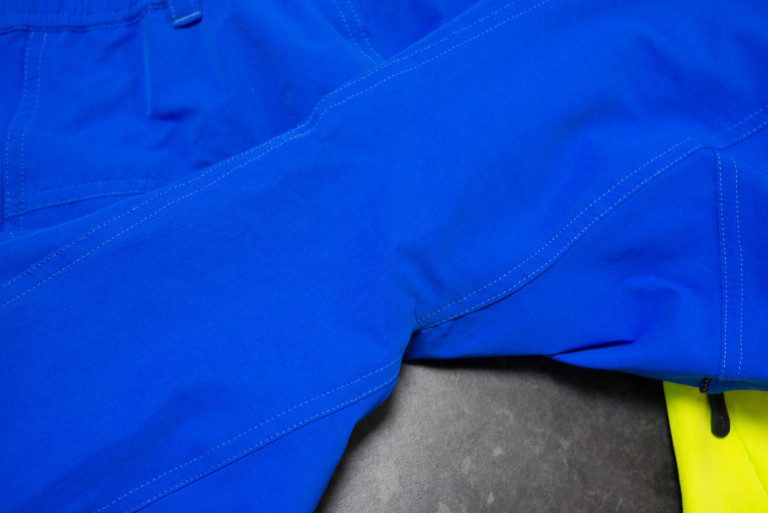
They’re sometimes reinforced and/or double layered in the seat area so they don’t wear out quickly.
Adjustments and features
As with a lot of cycle clothing, less is often more. Too many features stuffed into a garment can help salespeople sell a garment (“it’s got this… it does this…” etc) but often the key to good clothing is: suitable material, cut well and decently stitched.
Stuffing loads of pockets, waist adjusters, zips and vents into a pair of shorts just adds to bulk and seam problems and often prevents the shorts from sitting right.
As mentioned above, a pair of hip pockets are useful. I can’t recall the last time I ever used any other sort of pocket during a MTB ride. You just have things in your hydration pack don’t you?
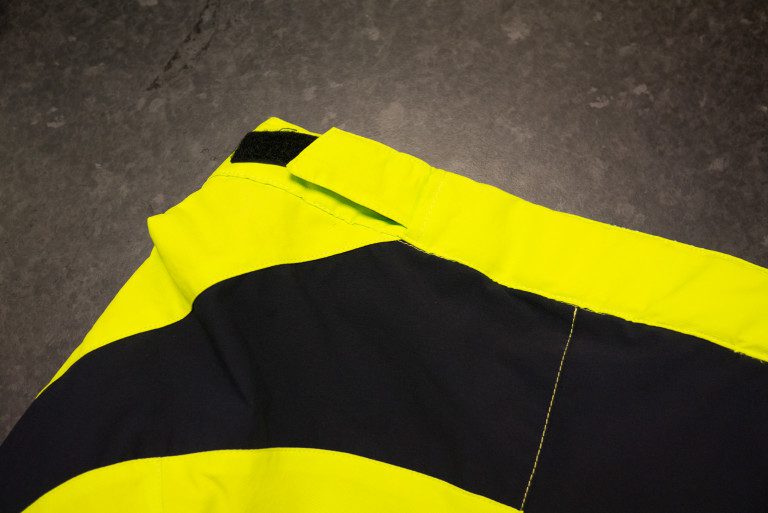
Some sort of internal or external cinch adjust for getting the waist band to fit ‘just so’ is a must-have. Otherwise the shorts will creep down and require constant tugging up. And sometimes you might want to slacken them off ie. after putting on weight at Christmas! Adjusters positioned at the back of the waistband are more effective and comfortable than ones at the front.
I also quite like belt loops in additional to internal cinches but I can see why most riders wouldn’t really be into them. It’s nice to have them there though I reckon.
How long and how baggy to go?
I’d recommend erring on the side of avoiding excessive bagginess. Very flappy shorts not only serve no purpose but they can actually end up being counter-functional. They can snag on your bike. They can get very heavy and droppy when drenched.
Having said that, I think it’s a good idea to get shorts that are baggy enough to sit well over knee pads. You may not ride in keen pads very often but you don’t want to have bunching-up issues when you do.
Length is a fashion thing. Personally I don’t like baggy shorts that fully reveal the knee cap during the pedal stroke. They just look a bit too ‘boy scout’!
Often the inseam length is listed in the product description of the short. This really helps when buying a pair shorts that you aren’t easily able to try on.
What material to go for?
If you’re a downhiller or someone who doesn’t do much pedalling around then feel free to get a hefty pair of baggies. They’ll be warm. They’ll help to protect you a bit more in crashes. Plasticky motocross-style shorts are okay but whatever you do, avoid cotton.
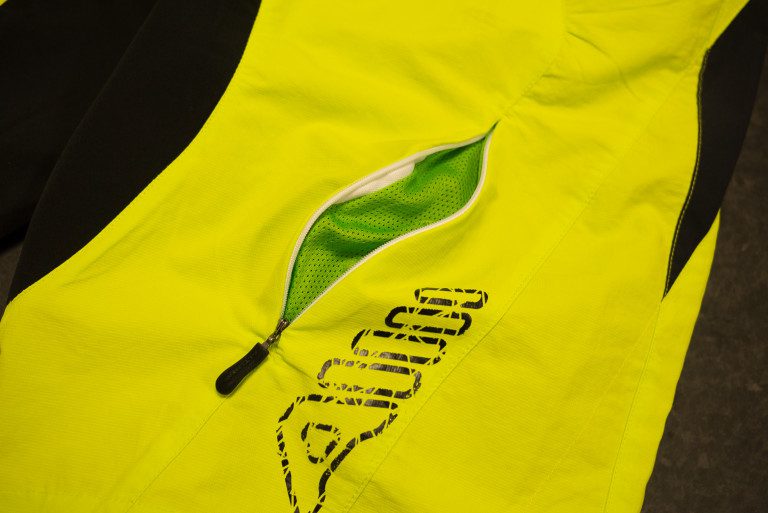
For the rest of us though it’s a good idea to avoid unduly heavy or OTT baggy shorts. If it’s a toss-up between going for vents or going for lighter weight more breathable fabrics – go for the latter.
If you want a pair of baggies for staying warm then go for a pair of baggies that keep you dry. Waterproof overshorts are rapidly becoming a staple garment in the MTBers wardrobe. It makes sense. You wouldn’t go biking in filthy weather without a jacket would you? Why not cover your lower quarters in the same manner?
If you are going for waterproof shorts then go for 3/4 length ones. They work much better than regular length versions.
Which mountain bike shorts should you go for?
Leisure riders will actually do just fine with a set of casual shorts over the top of a pair of half decent padded liner shorts.
Regular riders should go for a baggy short without a built-in/included liner short. Get a liner short in the sales separately. Baggy shorts should be made of a suitable outdoorsy or athletic fabric (avoid cotton) and have a couple of handy pockets. Bike-specific tailoring is nice, as are waist cinch adjusters.
Racers fall into two camps. XC and marathon racers shouldn’t bother with baggies. Lycra makes sense and you really won’t be bothered about how you look. Enduro racers should go for something relatively light weight and not overly baggy or droopy.
